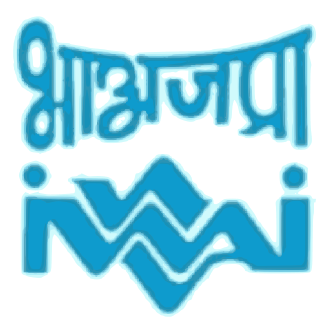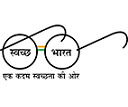Hydrographic Survey Instructions –01/2022.
A. Planning
1. Schemes Preparation
1.1. Annual scheme for hydrographic survey shall be forwarded to HO, Noida two months before start of new financial year for approval of the Competent Authority.
1.2. The Annual scheme to be prepared keeping following points in view:
• Estimation of number of days for field surveys, which includes lean and flood season thalweg surveys, all types of detailed surveys (Shoal, Bandalling, Dredging & Terminal) and other essential surveys (Channel Inspection, Reconnaissance etc.).
• Expenditure towards fuel, oil, contingent manpower and OBM operators (along with minimum wages orders).
• Tide Gauges and Tide Gauge Readers with budgetary quotes/ minimum wages orders.
• Hiring of Vessel, Boat, Manpower with budgetary quotes and justifications • Equipment / PC repairs / Upgradation, Annual Maintenance (Hypack, PC, Echosounder etc.) and Insurance charges.
• TA/DA, Stationary and welfare provisions.
• Estimation of new software and hardware required with budgetary quotes and justifications. NIT Charges.
• Other miscellaneous items like World Hydrographic Day Celebration, Recharges, Royalty charges, Satellite Imageries etc.
1.3. Field office have to assess the requirement of hardware and software’s for next five years as per the field requirement, introduction of new technologies, accuracy, equipment health and forwarded to the H.O. for procurement.
2. Operational Management
2.1. Necessary approval of schemes, work orders etc. for execution of different developmental activities for improvement and maintenance of navigational channel are being issued from time to time.
2.2. The expenditure shall be made observing due economy in the expenditure, as per the Delegation of Powers by duly observing all codal provision of GFR / rules / regulations / order of GoI / GeM / IWAI relating to procurement of goods, services.
2.3. Necessary provision for procurement / repair / AMC of survey / communication equipment, Boats are being provided in the estimates.
2.4. Before commencement of seasonal survey works, it is to be ensured that all the equipment’s are in good working condition and software’s have been updated (like updating of Hypack license etc.).
2.5. Procurement: All hardware, software and stationary provisioned in the scheme shall be procured through online open tendering or GeM or through appropriate procedure before commencement of working season.
2.6. Every instrument shall be affixed with barcode sticker for centralized Inventory Management and Tracking System (IMTS).
2.7. All hardware and software are required to be properly maintained through maintenance contract / timely repair. If the cost of repair / maintenance contract exceeds the delegated power of field in-charge, necessary approval may be obtained from the H.O. in advance.
2.8. Check off list before undertaking hydrographic survey has to be made and the Check list shall contain following information:
• Scope of Work
• Availability of Survey Vessel and Boat
• List of hardware (Laptop / PC, Echosounder with Transducer, DGPS / GPS) and software (HypackMax with Hardlock) required as per Scope of Work.
• Generator / Invertor, sufficient numbers of 24V/12V Batteries, AA/AAA Pencil Cells, Connectors, Moxa Cables, DC to AC convertor, Extension Board, Plugs, Bamboo, Ropes, Oars, Anchor etc.
• OBM with Operator, Fuel, 2T, required stationary etc.
2.9. It is advisable to keep additional hardware and software with accessories.
2.10. Operational and maintenance instructions of Echo Sounders, DGPS / GPS Receivers and Software and there interfacing and interconnectivity may be prepared with the help of instrument manuals / Suppliers. The draft Standard Operating Procedure (SOP) may be prepared for each equipment and the same may be forwarded to H.O. for approval.
2.11. Water level / tide gauge shall be installed in tidal regions. Gauges shall also be levelled from GTS Bench Mark.
2.12. All the Chart, recommended route and list of shallow patches may be updated before survey.
2.13. Monthly physical and financial targets should be fixed.
B. Data Acquisition
* Note: - All type of Hydrographic Surveys are to be conducted with the help of Automatic Hydrographic Survey System (AHSS) only.
3. Operational Instructions Before Start of Survey
3.1. Operational capability of Survey launch / Survey boat should be checked that it is “fit for hydrographic survey” (including engine / OBM) and sufficient fuel is available.
3.2. All equipment / PC’s are to be checked for its working conditions and placed tightly in safe place to avoid any damage / impact.
3.3. PC should be loaded with proper anti-virus software with latest anti-virus definition updates.
3.4. All the power and interfacing cables shall be connected with the equipment.
3.5. Power supply (AC / DC) for equipment shall be as per equipment manual (input / output). Follow standard procedure for “Switching On / Off”.
3.6. Ensure that positioning equipment has received sufficient number of satellites for giving Navigational position.
3.7. Draft of survey vessel should be accurately measured and checked with “Bar”. Same needs to be verified and collated with draft setting in echo sounder before commencement of survey. Bar Check should be carried out for different depths prior to commencement of survey, end of survey and compared as the survey progresses, as a check against gross errors.
3.8. Check that equipment required for navigation and hydrographic survey are properly attached in respective Ports of Computer and digital outputs are properly being received in survey software. Proper dll files with output shall be selected in the hardware setting.
3.9. Datum (WGS84), Projection (UTM), Zone number should be properly entered in Automatic hydrographic survey system.
3.10. Previous surveyed route of the same area / stretch should be available in survey software as reference lines / track for guidance.
3.11. For pre and post detailed surveys, prepare planned line perpendicular to the bank.
3.12. Standard nomenclature should be followed for each Project which clearly indicate type, fortnight, month, year and stretch of the survey.
3.13. Following is to be prepared before survey operations:
• Hardware (Echosounder / GPS) positional offset setup. It should be tried to tie the GPS / DGPS Antenna above the Echosounder Transducer
• Transducer Draft
• Hydrographic survey project information’s (preferably long filenames is to be selected)
• Navigational Parameters
• Survey line selection
• Chart selection
4. Data to be Recorded During Survey:
4.1. All the raw data received from equipment are to be recorded, so that the charts can be plotted in any desired scale.
4.2. Followings are to be collected with geographical positions and update on the charts:
Details of all conspicuous features important for river navigation and helpful to mariners for navigation (if possible with photograph) for Charting in ENC/RNC or physical verification of charted conspicuous object
• Bandalling, Dredging
• Any significant change or developments like bridges, power line, telephone lines, cables. Air clearance from these also to be measured and reported.
• Chimneys, buildings, temples, trees, etc.
• Pontoon Bridges, Water Intakes, Pump House
• Terminals, Jetties, Ferry service routes
• Navigational Lights, Marks, Buoys
• Bank erosion
• Formation / removal of sand bars
• Other Navigation impediments etc.
4.3. Hydrographic Surveyor’s in the respective stretches must ensure that navigable channel (deepest route) is identified at/ around shoal locations by taking sufficient cross-sections to ensure corrections of LAD at the locations before issuing River Notices/ LAD Report.
4.4. There should not be any data gap. If there is any data loss due to replacement of GPS batteries or any other reason, vessel should be slowed down & turned around with On Line Run Back (OLRB). Data logging to be resumed from the last recorded location.
Detailed Surveys
4.5. Navigational channel should be closely monitored when the depth reaches 0.5m above the targeted LAD. After identification of the shoal limits, detailed survey should be conducted at shallow patch covering deepest channel U/S and D/S of the identified shoal.
4.6. Cross section is to be carried out at 50m interval for Bandalling / Terminal surveys and at 25m interval for dredging surveys in the rivers. However, intervals may be decided by the E-i-C as per the site conditions or as per the agreement conditions.
4.7. Before commencement of pre dredging/ bandalling survey, Water level data is to be collected by setting up of a tide pole in the survey area, connect it to a TBM at nearby location and later it should be connected to the B.M. w.r.t. (M.S.L.). Gauge reading should be taken at least twice in a day at 8 A.M. and 4 P.M. till the completion of post dredging / bandalling survey.
4.8. Transfer of sounding datum is to be carried out as per (Admiralty manual for Tides) in the tidal regions. If established datum is available nearby, interpolation method is to be followed for arriving at datum value at site.
4.9. Observations such as position of bed sample, water sample; data in respect of wind speed, current measurement, discharge, flow direction, fixing of sand churs, snags, Bandals, dredging alignment, channel marks, night navigation lights and other prominent features on the bank should be collected during detailed / thalweg surveys and incorporated in chart.
4.10. It should be endeavoured to survey the planned lines as close to the planned line, however, survey’s having offset of more than 50% of the line spacing is not acceptable.
4.11. Wherever the depth is less and can’t be measured with Echo Sounder, it should be carefully measured with calibrated sounding pole/ lead line.
4.12. Minimum four numbers of floats measurements to is be observed at equal distance for better river conservancy works planning.
5. ADCP, Side Scan Sonar and Sub-Bottom Profiler
Data collected from survey equipment like ADCP, Side Scan Sonar & Sub-Bottom Profiler are necessary for making of updates in RNC/ ENC, River Pilot and also to study the behaviour of the Navigational channel. Hence the following works should be undertaken: -
5.1. Velocity & discharge measurement using ADCP at all tide gauge locations once in a month and during terminal surveys.
5.2. Velocity & discharge measurement using ADCP at every 50Km interval during flood season.
5.3. Use of Side Scan Sonar and Sub-Bottom Profiler for identification & searching of submerged objects and during terminal surveys.
5.4. Locations of river bed with hard strata should be identified and marked using Sub-Bottom Profiler 5.5. Any other specific requirement.
C. Data Processing
6. Digital Data Correction and Preparation of Reports
6.1. All the soundings should be carefully edited for false / spike echoes and corrections be merged without interpolation.
6.2. Positions are to be corrected for false/ wrong and positional jumps.
6.3. Detailed quantity calculation sheets w.r.t. the design channel should be attached with the chart/ report.
6.4. Water level data should be indicated on the detailed survey chart for analysis purpose.
6.5. Bench Mark (B.M) & Temporary Bench Mark (TBM) are to be plotted with description on Chart for easy recovery in future.
6.6. Digital charts (base charts) should be updated with latest thalweg route and detailed surveys.
6.7. Chart should be signed by the survey team-in-charge, In-charge of survey & Director / Office-In-Charge. D. Data Submission
D. Data Submission
7. Uploading and Forwarding of Data
7.1. LAD Report and River Notices should reach H.O. within 48 hours via E mail/ FAX/ Courier after completion of Thalweg survey.
7.2. Soft copy of Raw, Edited & Sort data of each survey should be submitted to H.O. along with the chart immediately on completion of survey. All the digital survey data (complete projects of thalweg / detailed) shall also reach to this office before 10th of every month.
7.3. The digital survey data should be uploaded on PANI portal and LAD data is to be timely updated in the LADIS Portal.
7.4. The thalweg survey route should be made available to all Mobile RIS stations, control stations.
7.5. Monthly progress report of Hydrographic Surveys along with the Water Level Data should reach Head office before 10th of every month.
7.6. Monthly physical and financial progress should also be uploaded on MIRS Portal.
7.7. Release of fund will be considered only after compliance of updation of projects, expenditure in MIRS, forwarding of digital survey data and item-wise expenditure to the H.O.
7.8. All survey PC’s should be equipped with CD/ DVD Writer/ USB drive and all survey data to be duly annotated, stored and kept in a safe place. All survey data should also be stored in back-up server.
8. Physical Verification of Survey Equipment/ Assets
8.1. Field office shall carried out physical verification by a duly constituted committee approved by Competent Authority for all computers, peripherals, survey equipment and allied accessories purchased under Hydrographic Survey scheme annually on or before 31st March and report is to be submitted to Head office.
8.2. During the above physical verification, the data of centralized Inventory Management and Tracking System (IMTS) are to be updated.
8.3. The updates of survey/GIS/ design software are to be reported with CAMC details.
9. Disposal of Obsolete & Unserviceable survey equipment/ Assets
9.1. Subsequent to completion of physical verification of survey equipment, Field office shall submit a report on the details of obsolete & unserviceable survey equipment, computer peripherals to IWAI, Noida.
9.2. In the report, the details on date of purchase, book value, depreciation, residual value, working condition are to be notified clearly for each equipment proposed for write-off as per GFR.
9.3. The articles shall be disposed by public auction procedure in the presence of duly constituted committee who have examined and evaluated/ensure the physical condition of equipment as per GFR.
10. Demonstration of Survey Equipment During the Visit of Senior Officers
10.1. IWAI offices shall take interest in demonstrating the survey operation using all available survey equipment to the visiting senior officers for appreciating the operational readiness of the field survey units in promoting IWT sector.
10.2. The Future technological advancement and readiness may also be demonstrated by presentation to senior officers.
Accordingly, the above instructions are issued with immediate effect for strict compliance by all field offices.

 भारतीय अंतर्देशीय जलमार्ग प्राधिकरण
भारतीय अंतर्देशीय जलमार्ग प्राधिकरण


